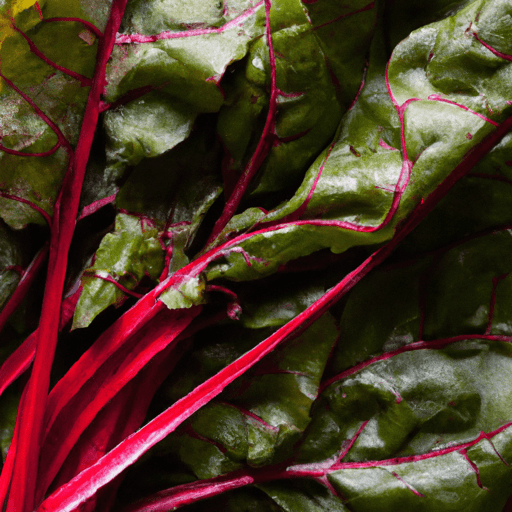The Versatile and Nutritious Beet Leaves: A Culinary Delight
When we think of beets, the bright red bulbs often steal the show. However, it’s time to shine the spotlight on the often overlooked beet leaves. Packed with flavor, versatility, and an impressive nutritional profile, beet leaves offer a culinary experience that is both delightful and healthy.
Taste and Texture
Beet leaves have a tender, yet slightly firm texture. They possess a subtle earthy taste with savory undertones, resembling a combination of spinach and Swiss chard. Younger leaves tend to be milder, while the older ones are slightly more robust. When cooked, beet leaves develop a pleasant silky texture that complements a variety of dishes.
Culinary Uses
These vibrant green leaves should not go to waste! Here are some popular ways to incorporate beet leaves into your culinary creations:
1. Salads and Wraps
Fresh beet leaves make an excellent addition to salads, offering a unique twist to your usual greens. Their mild flavor pairs well with a variety of dressings and can add a pop of color to your plate. Additionally, they can be used as tasty wraps for sandwiches or as a nutrient-rich alternative to tortilla wraps.
2. Sautéed and Stir-Fried
Sautéed beet leaves are a simple and delicious side dish that complements various main courses. Heat some olive oil or butter in a skillet, add garlic for extra flavor, and toss in your beet leaves. Sauté until tender and vibrant, then season with salt and pepper. For an added kick, you can sprinkle red pepper flakes or a splash of lemon juice.
3. Soups and Stews
Beet leaves bring depth and a hearty texture to soups and stews. Just like other leafy greens, they can be added to your favorite recipes during the last few minutes of cooking. Whether you’re making a comforting vegetable soup or a robust borscht, beet leaves will elevate the flavors and provide a delightful chewiness.
4. Juices and Smoothies
For the health-conscious individuals who enjoy their juices and smoothies, beet leaves are a fantastic addition. Packed with vitamins, minerals, and antioxidants, they boost the nutritional content of your beverages. Pair them with fruits like apples and carrots for a refreshing and vibrant drink that nourishes your body from the inside out.
Nutritional Powerhouse
In addition to their culinary benefits, beet leaves offer an array of nutrients essential for our well-being. They are a rich source of vitamin K, which plays a crucial role in blood clotting and bone health. Furthermore, they provide significant amounts of vitamins A and C, iron, calcium, and fiber. Incorporating beet leaves into your diet is an excellent way to introduce these essential nutrients into your meals.
Historical Significance
The beet plant, including its leaves and roots, has been cultivated for centuries and holds historical significance in various cultures. Ancient Romans, for instance, highly valued beet leaves for their therapeutic properties. They were used to treat ailments and were reportedly effective in aiding digestion and purifying the blood. Over time, beet leaves became widely appreciated for their culinary value, expanding their presence in kitchens around the world.
Don’t let beet leaves go unnoticed! Their delicate flavor, versatility, and impressive health benefits make them a worthy addition to your culinary repertoire. Whether you’re sautéing them as a simple side dish or blending them into a nutrient-packed juice, beet leaves are sure to enhance your meals and introduce a touch of nourishment and vibrancy. So, next time you buy beets, make sure to savor every part of the plant, from root to leaf.
Beet Leaves
Origin and History
- Beet leaves, also known as beet greens or beet tops, are the edible leaves of the beetroot plant (Beta vulgaris).
- The beet plant is believed to have originated in the Mediterranean region and was primarily cultivated for its leaves rather than the root during ancient times.
- The ancient Romans and Greeks used beet leaves as food and medicine, valuing them for their nutritional and medicinal properties.
Common Uses
- Beet leaves are commonly used as a nutritious cooking greens and can be prepared in various culinary dishes.
- They are often sautéed, stir-fried, steamed, or added to soups and stews.
- In some cuisines, young beet leaves are used in salads or as a garnish.
- Beet leaves can also be used as a wrapping or stuffing for meat or vegetable dishes.
Nutritional Benefits
- Beet leaves are rich in vitamins and minerals, including vitamins A, C, and K, as well as iron, potassium, and calcium.
- They are a good source of dietary fiber.
- Beet leaves contain antioxidants, such as beta-carotene and lutein, which are beneficial for eye health.
- Consuming beet leaves as part of a balanced diet may contribute to a healthy immune system and promote overall well-being.
Unique Properties
- Beet leaves have a slightly bitter and earthy taste, similar to other leafy greens, such as Swiss chard or spinach.
- They have a thick, textured surface and can vary in color, from dark green to deep red, depending on the beet variety.
- Some people recommend removing the tough central stem of the leaves before cooking, as it can be fibrous and less tender.
Historical Significance
- The ancient Greeks and Romans considered beet leaves to possess medicinal properties, especially for treating digestive and blood-related disorders.
- In European folklore, beet leaves were believed to have magical powers and were used in rituals and spells.
- Beet leaves have been cultivated and consumed for centuries, evolving from wild varieties to the cultivated forms we know today.
Please note that while beet leaves are generally safe to consume, individuals with certain medical conditions or dietary restrictions should consult with a healthcare professional or nutritionist before making any significant changes to their diet.




Use the share button below if you liked it.
It makes me smile, when I see it.